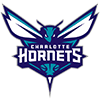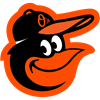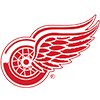This Week's Scouting Tip: Considering the Pitch Count Dilemma
It wasn't all that long ago when if you asked about a pitch count, the reply would typically go something like this, "It's 3-1 but he got squeezed on that last one." It wasn't common practice to carefully track how many pitches a pitcher had thrown in a game. Four-man rotations and a tendency to leave a good starting pitcher in the game as long as possible insured very high pitch counts, not to mention seasons with 300-plus innings pitched for some of the game's best. Careers didn't seem to be any shorter, and injuries weren't significantly more prevalent. Today, hardly an inning goes by without some discussion of the hurler's pitch count, and when a pitcher reaches a predetermined magic number, regardless of his performance, he generally comes out the game. Why is that? Has the game changed so much that it requires that type of precaution? Let's take a look...
Exploring it further:
Pitch Count vs. "Hitting a Wall"
Let me say right up front that most of the following opinions are my own. There are a lot of philosophies related to pitch counts, innings limits, and other factors involved in the handling of a pitcher in the major leagues, and many of them are conflicting.
A "workhorse" starting pitcher will typically make 32-33 starts per year and could work in the neighborhood of 220 innings. A few years ago, it was common for starting pitchers to take the
This Week's Scouting Tip: Considering the Pitch Count Dilemma
It wasn't all that long ago when if you asked about a pitch count, the reply would typically go something like this, "It's 3-1 but he got squeezed on that last one." It wasn't common practice to carefully track how many pitches a pitcher had thrown in a game. Four-man rotations and a tendency to leave a good starting pitcher in the game as long as possible insured very high pitch counts, not to mention seasons with 300-plus innings pitched for some of the game's best. Careers didn't seem to be any shorter, and injuries weren't significantly more prevalent. Today, hardly an inning goes by without some discussion of the hurler's pitch count, and when a pitcher reaches a predetermined magic number, regardless of his performance, he generally comes out the game. Why is that? Has the game changed so much that it requires that type of precaution? Let's take a look...
Exploring it further:
Pitch Count vs. "Hitting a Wall"
Let me say right up front that most of the following opinions are my own. There are a lot of philosophies related to pitch counts, innings limits, and other factors involved in the handling of a pitcher in the major leagues, and many of them are conflicting.
A "workhorse" starting pitcher will typically make 32-33 starts per year and could work in the neighborhood of 220 innings. A few years ago, it was common for starting pitchers to take the bump about 40 times a year and toss in excess of 300 innings. That equates to about an inning per start less today, so perhaps 14-16 fewer pitches per start. Today's athletes are stronger, in better physical shape, probably enjoy better nutrition, and have the big advantage of detailed scientific analysis for virtually every aspect of their delivery. You would think they could pitch deeper into games, and avoid the most serious injuries. But, they don't. There are several reasons mentioned by experts. For example, some say the game requires more consistent "max effort" to be successful, pitchers throw more high stress pitches like sliders, and that the increased strength and conditioning of today's players allows them to surpass the natural limitations of the human body.
While any of those reasons for monitoring pitch count are relevant, I think money is also a big factor. With the salaries of today, the investment is just too great to risk injury from overwork. The problem is, the coddling hasn't reduced injuries, and it probably has reduced the effectiveness of some pitchers. When a pitcher appears to be "hitting a wall" - generally struggling, failing to finish his pitches, leaving more balls up in the zone, or displaying other signs of fatigue, that is when the injury risk is greatest. Whether he's at 120 pitches or 60 pitches, his body language will tell you when he should come out.
That said, you don't want to get caught in the pitch count trap. When scouting a pitcher, watch for signs that he is hitting that wall. Just because he is only at 80 pitches, does not mean he is good for another effective inning or two. If your guy gets lit up in the sixth inning when he was obviously out of gas, be a bit more forgiving in your assessment. However, if he leaves the start after six innings when he was clearly still in command (and assuming he isn't returning from an injury where he was removed from the game as a precautionary measure while rebuilding his stamina), expect better starts in the future. The point being, pitch count does not necessarily translate to a reflective pitching line.
Here are some things to consider that go beyond pitch count:
Pitch counts are probably appropriate for pitchers coming back from an injury. It's a good idea to build a pitcher up before asking him to extend himself deeper into games. Therefore, understand that a pitcher in that situation might, over a few starts, gradually build up to 100-plus pitches per outing.
There are psychological factors involved in pitching. Some pitchers appear to almost be programmed to run out of gas when they hit a certain pitch count. It's not unlike a closer being far less effective in a non-save situation, or a short reliever being asked to pitch beyond one inning. The results can be ugly.
Most importantly, watch for signs that a pitcher is "hitting a wall" when you do your evaluations. Pitching far beyond that point can unrealistically cloud his overall statistics, while leaving before he has to deal with that type of adversity can make his stat line appear better than it might be when he is asked to go deeper into subsequent starts...
Finally, and this is my opinion based on my own observations, I wouldn't be too concerned if a pitcher throws 120-plus pitches in a few starts, assuming he was not overextending himself in doing it. I would be far more worried about a guy leaving after 80 pitches in back-to-back starts if he was obviously out of sync and struggling at that point in those games.
Now, let's check this week's Scouting Notebook
This continues our weekly feature scouting pitchers of interest. We won't normally cover the elite guys in this column, rather this forum is dedicated to finding pitchers who might help, and more importantly, might be obtainable (as well as pitchers to avoid). Alright...let's get started with this week's featured arms:
Rich Harden (OAK) vs. ARZ - Here is a good example of a reasonable pitch count restriction, and a situation where the pitcher might have hit a wall before reaching the allotted number of pitches. Harden was making his first start of the season, and the oft-injured hurler was reportedly going to be limited to about 90 pitches. He had thrown 72 in his last rehab outing, and 42 in the start preceding. As all fantasy baseball fans are probably painfully aware, keeping Harden on the mound is no easy task. He has spent all or some of nearly every major league season on the disabled list, and true-to-form, spent the first half of this year recovering from yet another injury. From a fantasy perspective, this start would be a chance for prospective owners to decide whether to roll the dice with Harden one more time, or pass and let some other owner assume the risk of adding him to their roster. However, first things first, how did he look?
Harden doesn't throw as hard as he once did - and with the ever-present injuries, that's probably to be expected. Still, he does sit in the 91-93 mph range and can touch 95 when the situation calls for it. He has always been a strikeout pitcher (his career 9.13 strikeouts per nine innings is among the best for active starters) and those strikeouts are a product of that lively fastball complemented by a couple of other solid offerings. Harden throws both a slider and a change although he throws the change much more frequently these days, a tendency that will likely be easier on his fragile elbow and shoulder. Most notably, the two pitches look very similar. Both arrive in the 81-87 mph range, they are delivered with a very similar arm action, and they are both very hard to read.
Against Arizona, Harden was throwing his fastball for strikes and spotting it well for the most part, but his off-speed pitches were what stood out. Most were changeups, but Harden doesn't throw a traditional straight change. His change drops off the table late and generates a lot of swinging strikes. His slider has more two-plane movement with less down angle, but it can also be a difficult pitch to pick up. Having to respect his fastball, hitters are constantly challenged to adjust to the changeup so he is likely to continue piling up strikeouts. The only two questions will be how well he commands the zone with his repertoire, and how long will he stay healthy.
As I mentioned earlier, Harden was supposed to throw about 90 pitches. He cruised through five innings, but began to struggle in the sixth. His fastball flattened out a bit, his change didn't have the same late movement, he looked a little fatigued and wasn't finishing his pitches with the same authority. He left the game, appropriately, after 76 pitches. Will stamina be a problem? Possibly. Will he stay healthy? Maybe. He looked very good in this first outing, worthy of a roster spot, but he stills represents a big risk.
Brian Matusz (BAL) vs. STL - This evaluation has nothing to do with pitch counts, or even hitting a wall. Right now, Matusz doesn't have the stuff to last long enough in a game to worry about either. After his 2010 second half, most baseball people, including a lot of fantasy experts, expected young Matusz to step into a role as the "ace" of the Orioles' staff. I was one of the believers. Then, he began the season on the disabled list with an intercostal strain, and his recovery from that injury drug out a bit longer than expected, but once it was announced he was being activated, expectations ran high. Unfortunately, once he took the mound, while expectations were high, his velocity wasn't, and the hit parade began. It eventually became so bad, Matusz was sent down to Triple-A Norfolk last week, hopefully to rejuvenate his once plentiful ability.
Our analysis actually spans two starts. Wanting to measure any progress, I watched both his start against Cincinnati, and then his latest start against the Cardinals. Both starts ended with very disappointing results. He never has been a true power pitcher. When right, his fastball sits in the low-90s and can touch 93-94 mph. In these two outings, he never broke 90. Matusz relies on his excellent changeup and a solid slider, both set up with the fastball. However, when the hitter can't differentiate the fastball from the changeup - both being clocked in the mid-80s - the game tends to turn into a well-dressed version of batting practice. After the dust settled, Matusz left the St. Louis start after leaving far too many pitches up in the zone leading to his biggest obstacle in 2011 - the home run ball. Before his demotion, he had allowed nine homers in 25.2 innings.
It's difficult to say what is wrong with Matusz right now. His velocity is down about four miles per hour, and he does not appear to be finishing his pitches. Lack of finish results in pitches left up in the zone, and can contribute to a decrease in velocity. I'm inclined to think it's mechanics rather than an injury, although intercostal strains can be agonizingly slow to heal completely. However, unless he is hiding an injury, the Orioles would not likely risk sending him out if he was hurt. At this point, he really needs time in the minor leagues to work through his problems. Not only does he need to rediscover his zip, he probably needs to rebuild what has to be at least strained confidence. He obviously has the ability to be a front-of-the-rotation starter. At his age, you have to believe he will eventually work this out. How long it will take is hard to predict. He's probably worth stashing on your bench if you have the space, but it might be awhile.
Jeremy Hellickson (TB) vs. STL - Going into the 2011 season, Hellickson was one of the most talked about young pitchers. With an opening in the Rays' rotation, he would get the opportunity to show his stuff at the major league level and a large number of fantasy owners were anxious to add him to their rotations. Now, halfway through the season, it might be a good time to see where he's been, and perhaps more importantly,see where he's headed in the second half. I'll admit, that while I think Hellickson is and will be a very solid pitcher, I was not as excited as most regarding his prospects before the season began. Primarily, I felt he was a bit overhyped which would drive his cost/draft position too high to provide good value. After watching his first half, I would say he has provided fair value, however I still see things I believe could be a problem for him down the road. He certainly has the ability to adjust and overcome these potential problems, but he may have to make some significant adjustments long term.
In our evaluation start against the Cardinals, Hellickson pitched into the eighth inning (and threw just 94 pitches - 60 strikes - to get there), he allowed six hits, walking one and striking out two, while notching his eighth win of the season. All good, yes? Actually, while the numbers suggest a strong outing, there were some red flags. He allowed two home runs in the game, and that gives him seven allowed over his last six starts. With the low strikeout total, the home run ball could become a concern if he allows too many baserunners. In fact, in this game he served up a few warning track flyouts. The root of the problem is his two-pitch arsenal. He basically throws a 90-91 mph fastball and a low-80s changeup with an occasional slurvy slider. He can hit 93-94, but the Cardinals were basically laying off the fastball and waiting for the very good, but predictable straight change. As it generally does, guessing right produces productive swings.
Overall, Hellickson is actually similar to Matusz, except he has a solid fastball to create effective speed differential. Both want to rely on the changeup as an out pitch, and both would like to use the fastball to set up the off-speed pitch. It's a proven formula for success. However, he probably needs to throw the fastball more often, and mix in a few more breaking pitches. His deliberate windup with an explosive release makes his fastball "sneaky" fast so he can use it more often if he spots it well. He has the stuff and the mound presence to remain a good one, he just needs to vary his pitch selection a little more to avoid hitters timing his bread and butter changeup.
Some short takes:
Zack Greinke (MIL) - While he is ringing up the strikeouts he has also developed an alarming tendency to give up home runs at very bad times. Greinke seems to have become somewhat unlucky while also losing focus when pitching in critical situations. You have to believe he will get it together before too long.
Tyson Ross (OAK) - His rehab is going well and he should return shortly after the All-Star break. The problem is, the A's rotation has become a bit crowded. Harden is back, Brandon McCarthy is back, and Guillermo Moscoso has pitched fairly well. Ross has more upside than Moscoso, Harden and McCarthy are huge injury risks, so be patient.
Luke Hochevar (KC) - In what is becoming a bit too commonplace. The Royals staked him to a big lead and he coasted through four innings but couldn't make it out of the fifth to qualify for a win despite Kansas City going on to a 16-8 victory. I was one who thought Hochevar might step up as the "ace" of their staff, but he hasn't done it yet.
Chien-Ming Wang (WAS) - I had to throw him into this week's short takes just because he doesn't get mentioned near enough these days. He was sitting in the low-90s with his fastball in a rehab start last week which would be roughly what we saw when he was successful a few years ago. If Harden can come back again, can Wang be far behind?
Matt Garza (CHC) - With most teams, Garza would be drawing a good deal of attention, however the Cubs have managed to hide his best performances pretty well. He is capable of a big second half and I don't think even the Cubs can hold him back for the entire season. Mark him down as a decent buy-low candidate.
Rick Porcello (DET) - After four horrible outings, Porcello finally logged a quality start in his last outing. The frustrating inconsistency of both Porcello and Max Scherzer had to be a factor in Detroit changing pitching coaches last week. Maybe their new mentor can get them both back in the groove.
Phil Hughes (NYY) - With the recent demotion of Ivan Nova to Triple-A, it appears the Yankees are ready to see if Hughes is back. His rehab went well, and if he has his arm strength back to normal he could be a great addition to your fantasy rotation. He should start Wednesday and the window of opportunity could be small if he pitches well.
Josh Collmenter (ARZ) - The honeymoon may be coming to an end for one of the more enjoyable early-season success stories. Being basically a two-pitch pitcher, it's not terribly surprising to see the league catching on to his stuff. His overhand delivery is still a joy to watch, but he might find it more useful out of the bullpen long term.
J.J. Putz (ARZ) - On the disabled list with elbow soreness and his health track record gives plenty of reason for concern. The Diamondbacks have downplayed the injury but he was struggling recently after dominating months of April and May. David Hernandez is most likely to get the save opportunities while Putz is out.
Jonathon Papelbon (BOS) - His ERA is still a little soft after a couple of poor outings earlier in the year, but Papelbon is perhaps as locked in as he has ever been right now. You always had to love his stuff, but his mound presence is amazing these days. If the Red Sox let their opponents stay close occasionally, he could have a huge year.
Matt Capps (MIN) - Joe Nathan is back but the Twins insist Capps is still the closer. His usage suggests they are being honest - at least for today. Minnesota might have rushed Nathan back prematurely earlier this year so they will probably wait to make sure he is 100 percent before moving him into the end game role again. It's only a matter of time.
Kids Corner
Jake Odorizzi (KC) - A lot of fantasy folks talk about the talented young Royals arms working their way through the system. Danny Duffy has already been up and Mike Montgomery is highly regarded, however the best of the group may be Jake Odorizzi. He was acquired in the Zack Greinke deal and was recently promoted to Double-A after dominating at High-A - 103:22 K:BB ratio over 78-plus innings - keep an eye on him.
For some of the most in-depth coverage of all things pitching in fantasy baseball for 2011, visit www.bogfella.com and be sure to follow @RotoWire and @bogfella on Twitter.




























